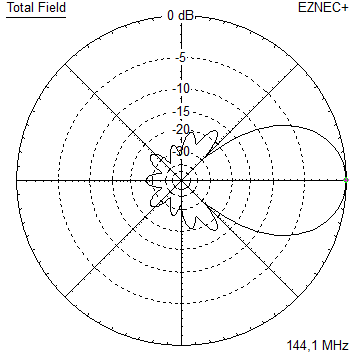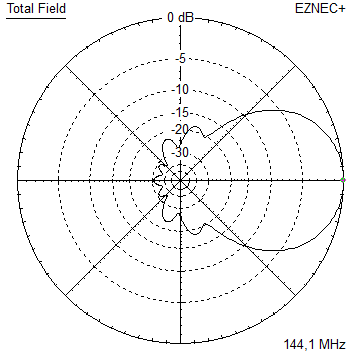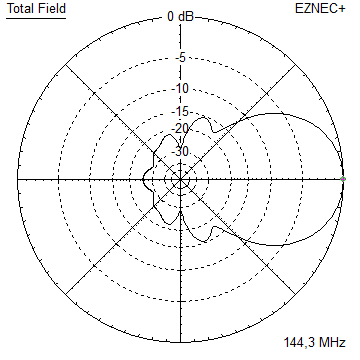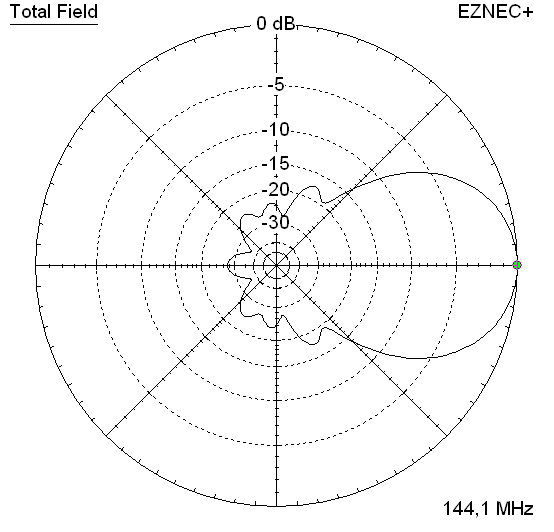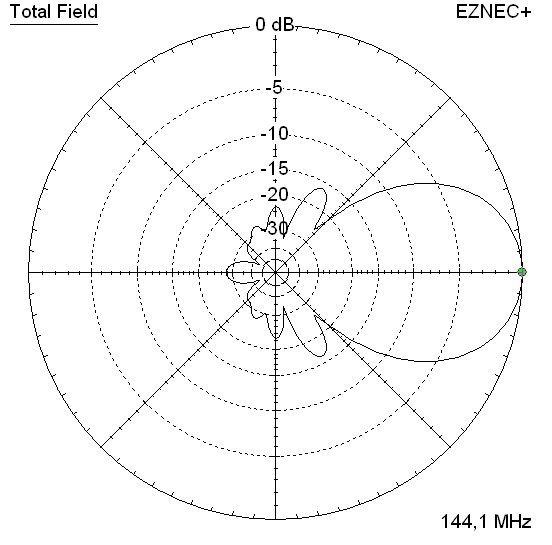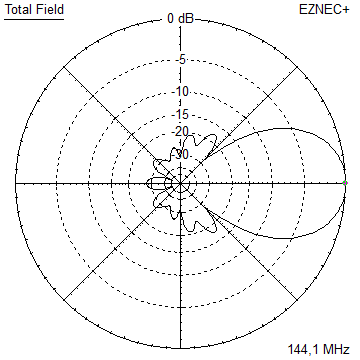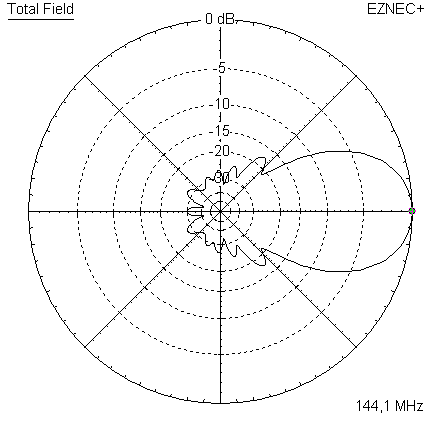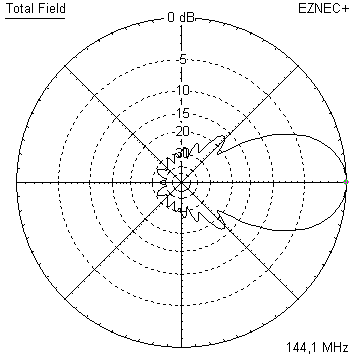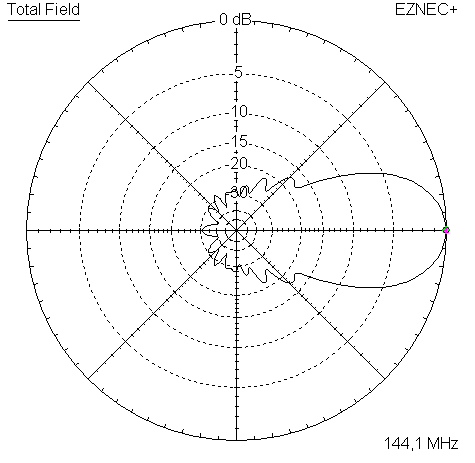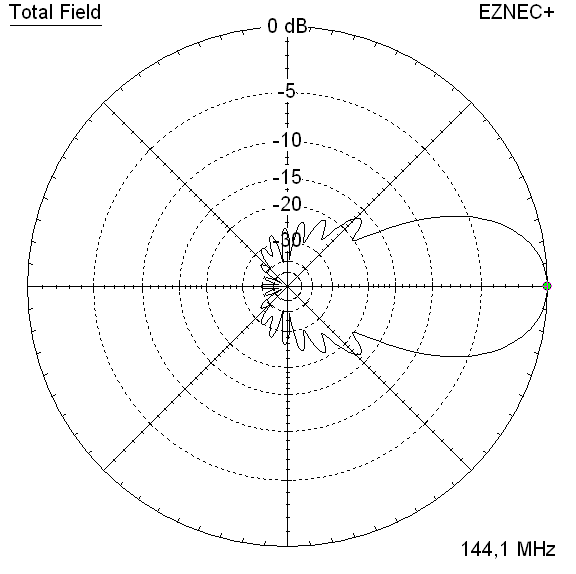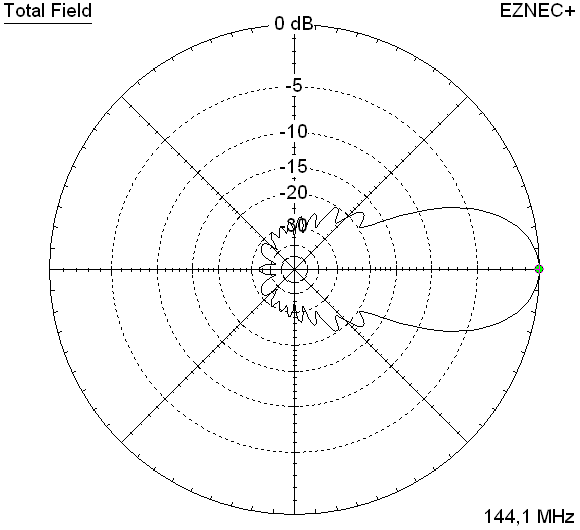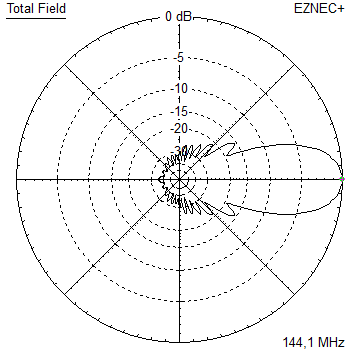
GTV 2-7w Yagi with bent Driven Element
For the given bandwidth this Yagi shows quite a low Antenna Temperature and a moderate gain for its length. The bent DE (K6STI style) transforms to 50 ohms at feed point for direct feed. Design date of issue: 2020.09.18
GTV 2-7w xpol built by_ZS6JON


GTV 2-7w 3D pattern plot at 144,3 MHz
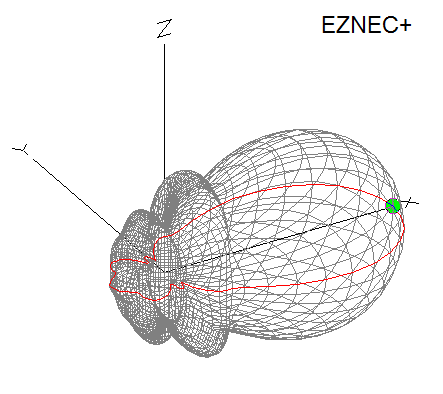
Performance Data
Specs: with 8 mm elements @ 144.1 MHz
Gain vs. isotr. Rad. 12.3 dBi Gain vs. Dipole 10.1 dBD -3 dB E-plane 44.6 deg. -3 dB H-plane 52.8 deg. F/B -25.0 dB F/R -22.1 dB Impedance 50 ohms VSWR Band Width 1.01:1 * Mechan. Length 2691 mm Electr. Length 1.29 λ Stacking Dist. h-pol. (144.1 MHz) top-to-bottom 2.34 m or 7.7 ft side-by-side 2.74 m or 9.0 ft Stacking Dist. h-pol. (145.5 MHz) top-to-bottom 2.32 m or 7.6 ft side-by-side 2.71 m or 8.9 ft *) as in VE7BQH G/T table = at 145.00 MHz
How many VHF operators have been looking up this design since Sept 2020?
Geometry
This Yagi with 8 mm elements on a 20 x 20 mm boom with standard insulators

|
Ele. 8.0 mm DE 10 mm Boom 20 x 20 mm |
|
"Ready to saw and drill" data for mounting elements on boom with BC according DG7YBN for standard insulators as sold by WiMo, Tino's Funkshop, HF-Kits NL, 7arrays:
Includes an SBC of 1.17 mm

SegmentationBC = +1.17 mm = (144.3 MHz - 144.5 MHz) * 5.85 mm/MHz BaseBC (20x20) = +3.90 mm for semi-insulated on boom Total = +5.07 mm Note: element lengths for Ø 8 mm fit 5/16" too
The Drivers diameter is 10 mm for all examples.
The EZNEC model is done with Auto-Segmentation at 400 MHz

Ø 3/16 inch Elements, 3/8 inch Dipole - Through Boom - Dimensions (BC acc. SM5BSZ's BC.exe)
Imperial Boom 1"
|
This table is only valid for: Boom shape: square Boom dim: 1 x 1 inch Wall thickn.: 1.6 mm Holes in boom: 7.7 mm Offset rear: 40 mm Offset front: 40 mm |
Note: All the above include a "Segmentation Density Correction" (SBC) of 1.17 mm per element.
Note: with through Boom BC it is important to stick to the boom end offsets given below!
Read abt. the SBC here

Sketch of Bent Dipole

Pattern and VSWR Plots
Elevation and Azimuth plot at 144.1 MHz


Elevation and Azimuth plot at 144.5 MHz


Elevation and Azimuth plot at 145.0 MHz
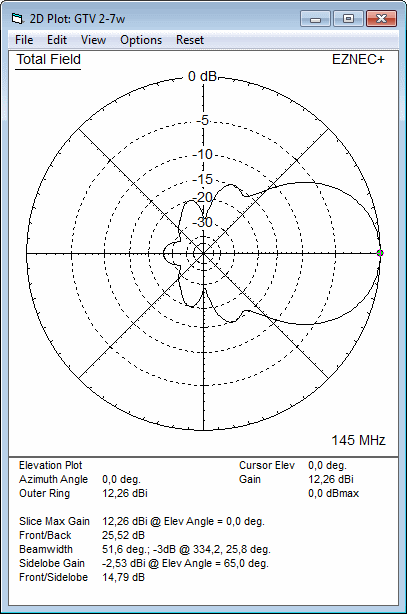

Elevation and Azimuth plot at 146.0 MHz
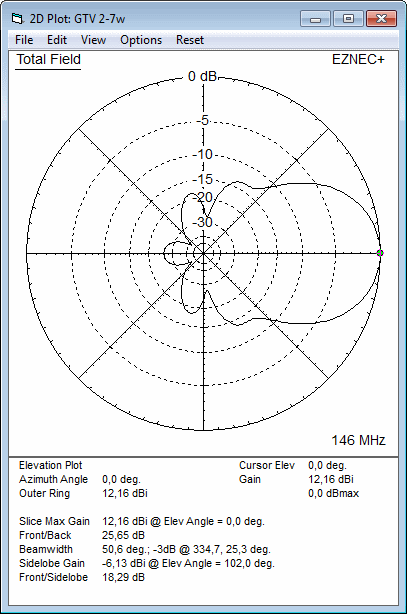
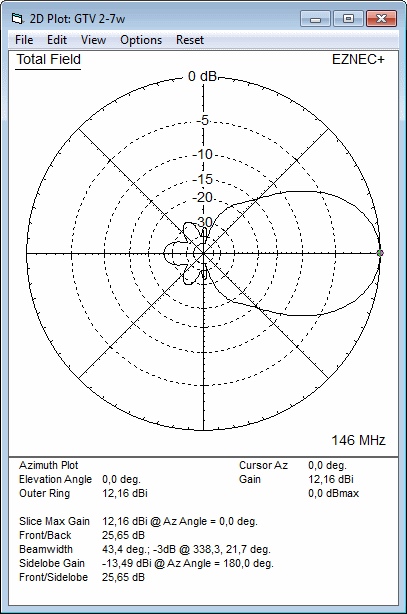
Finally: A comparison between elevation patterns DK7ZB "7-El.-Ultra-Wideband-Yagi 50 Ohm, 6 MHz SWR < 1,15" and shorter GTV 2-7w.

RL and SWR plots - simulated

Gain and F/B, F/R

Return Loss (dB) plotted on the full xpol, both planed combined by ZS6JON, span 120 - 171 MHz:

Downloads
None so far.
Stacking
Stacking Dist. DL6WU Formula (144.1 MHz) E-plane 2.74 m or 9.0 ft H-plane 2.34 m or 7.7 ft
Plot and data of 2 vertically stacked GTV 2-7w using DL6WU stacking distances
Antenna View & Elevation Pattern
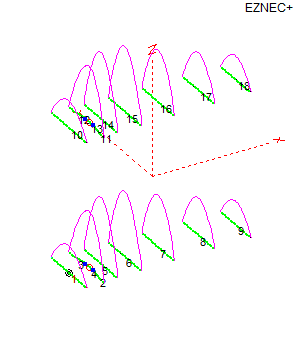

Plot and data of 3 vertically stacked GTV 2-7w using DL6WU stacking distances
Antenna View & Elevation Pattern
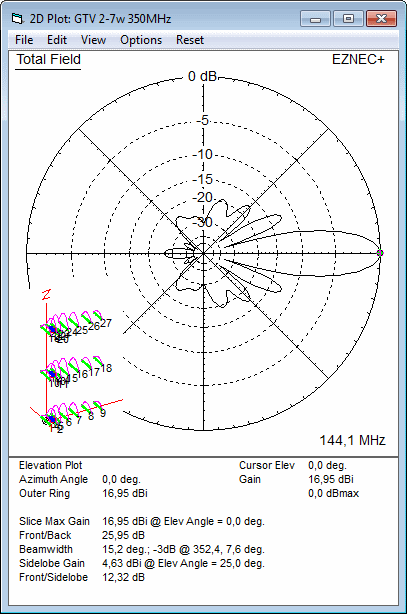
Plot and data of 4 vertically stacked GTV 2-7w using DL6WU stacking distances
Antenna View & Elevation Pattern

Plot and data of 4 in H-config stacked GTV 2-7w using DL6WU stacking distances
Elevation & Azimuth Pattern

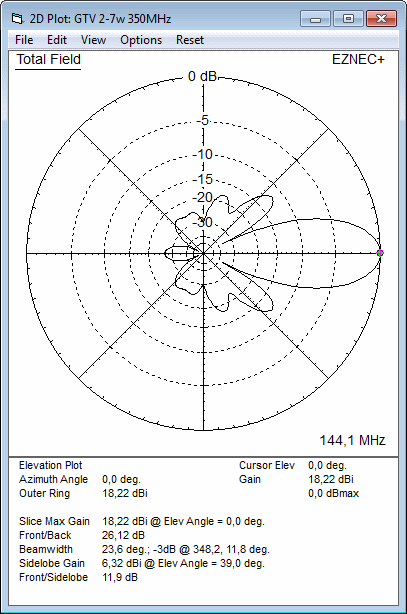
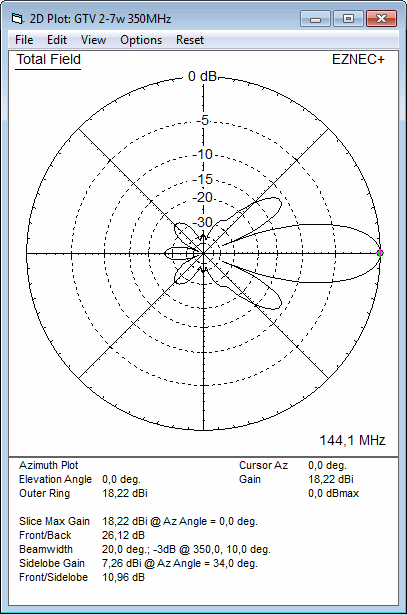
Excel version of AGTC_lite screenshot (Tsky = 290 K, Tearth = 5400 K)
Mind that this Yagi covers the whole 2 m band with a Return Loss better -35 dB or VSWR 1:03 in theory.
So the Antenna G/T will not be as low as you might be used to from comparaing a GTV Yagi to others in
the VE7BQH Antenna Tables.
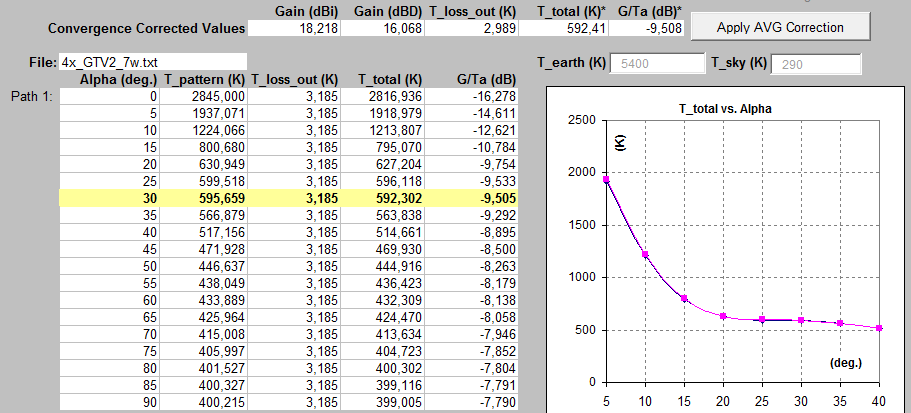
73, Hartmut, DG7YBN
